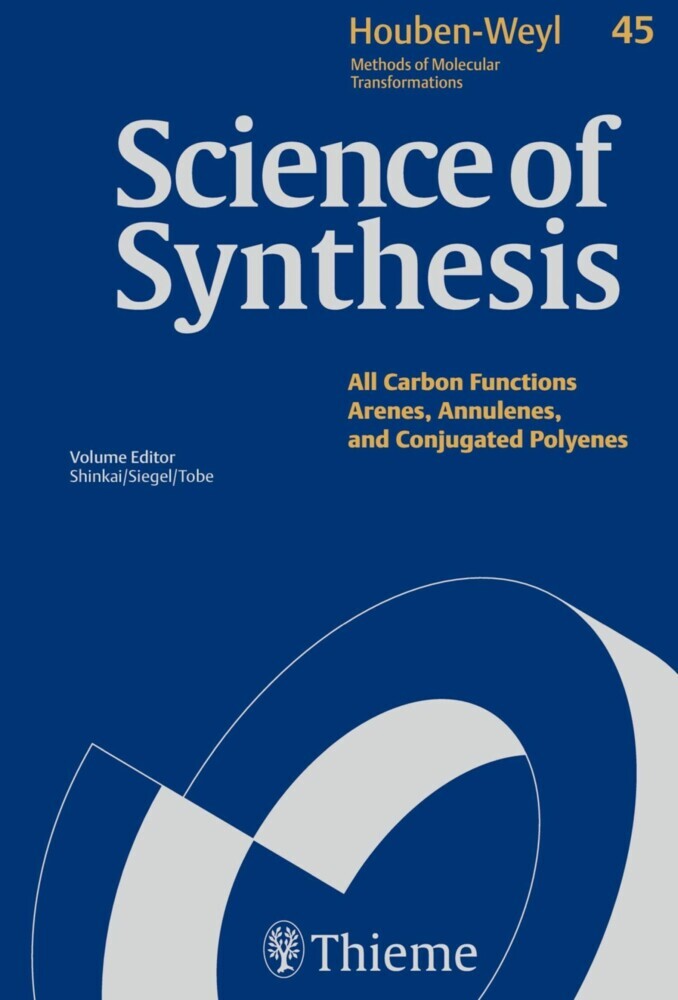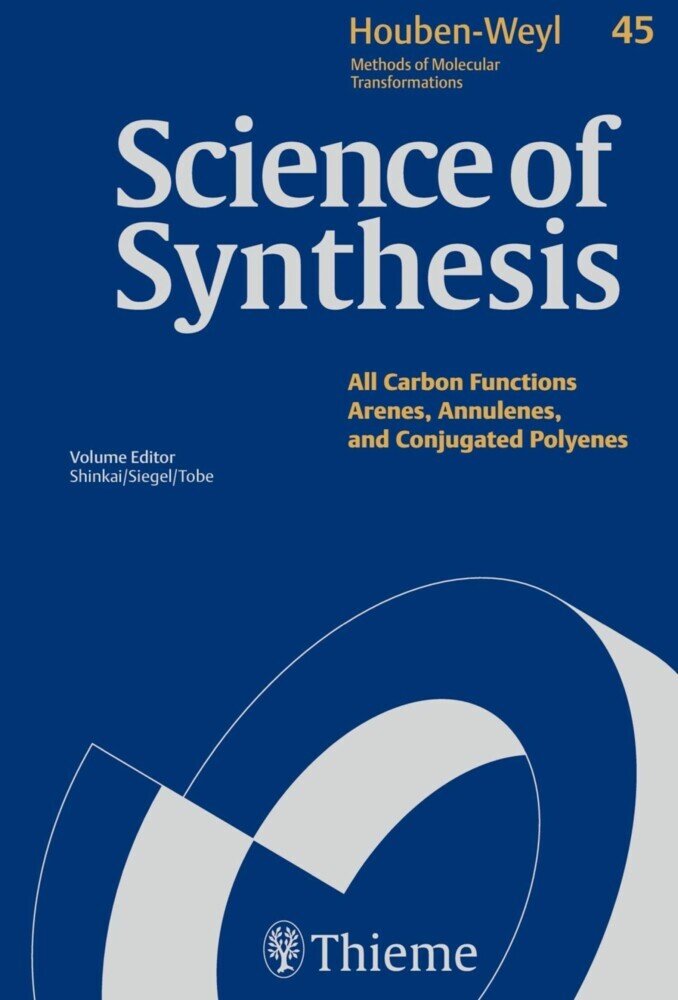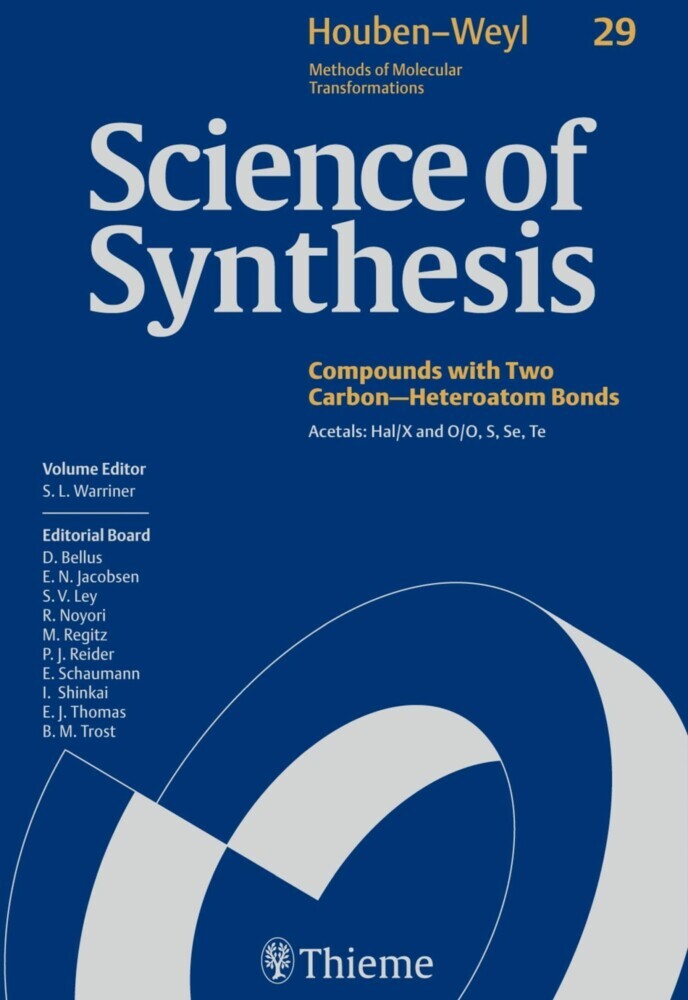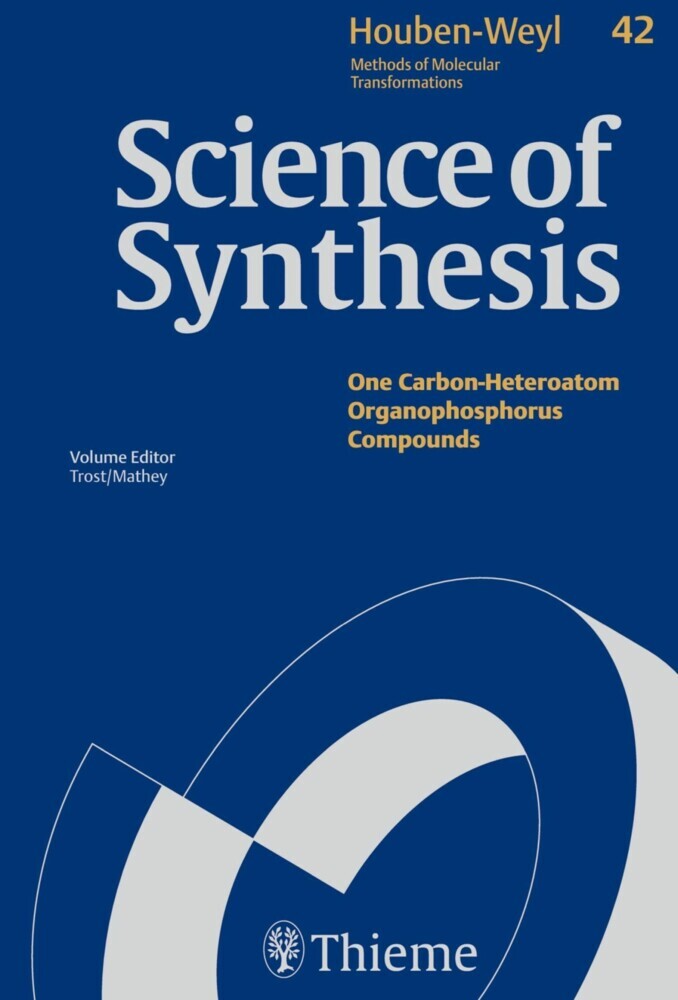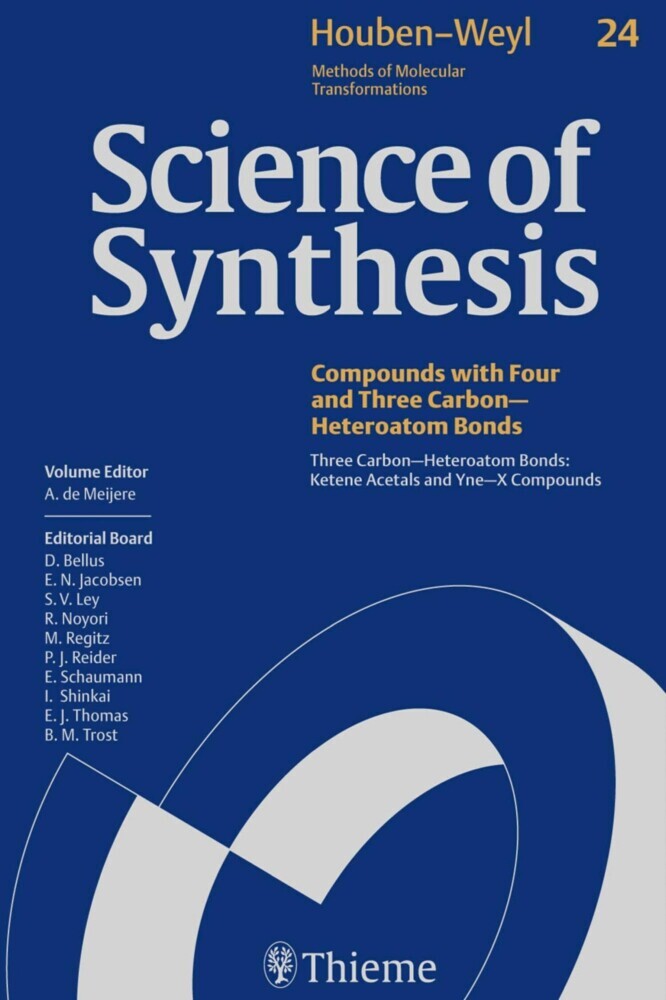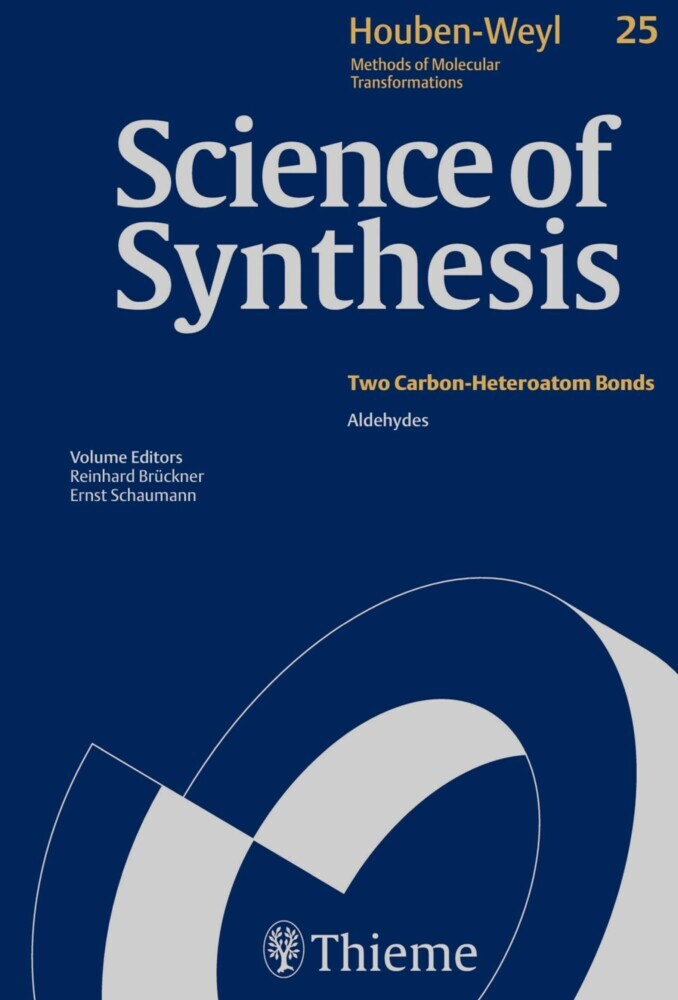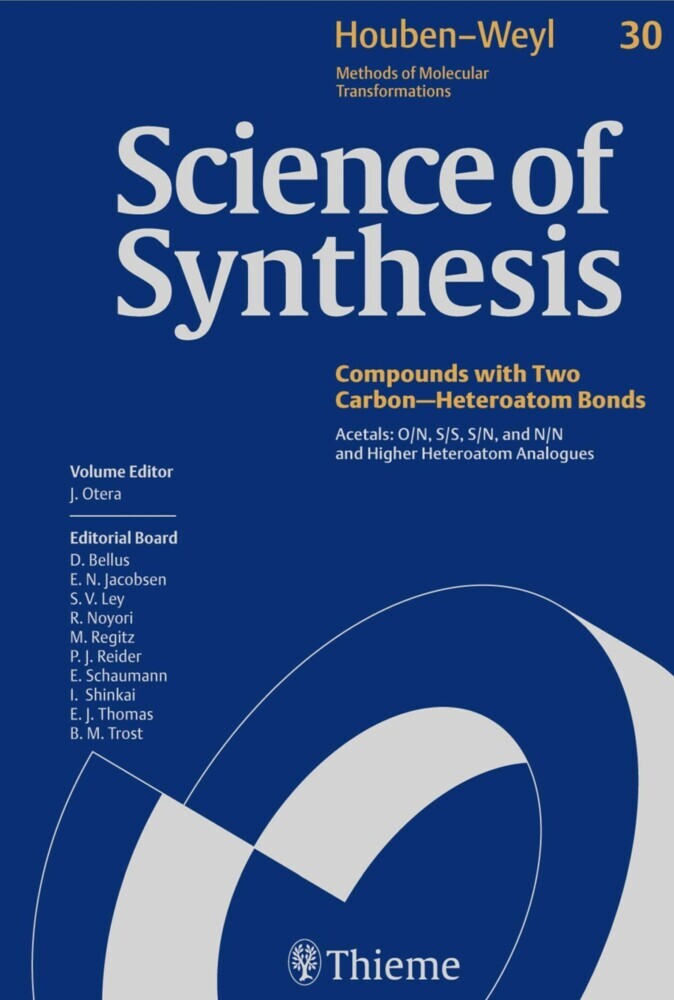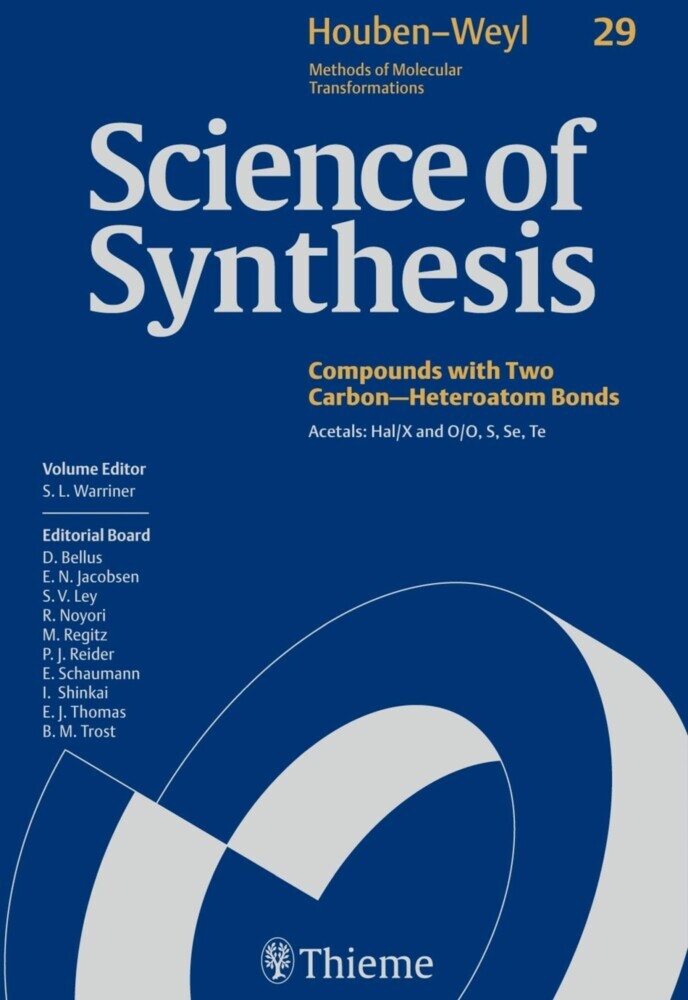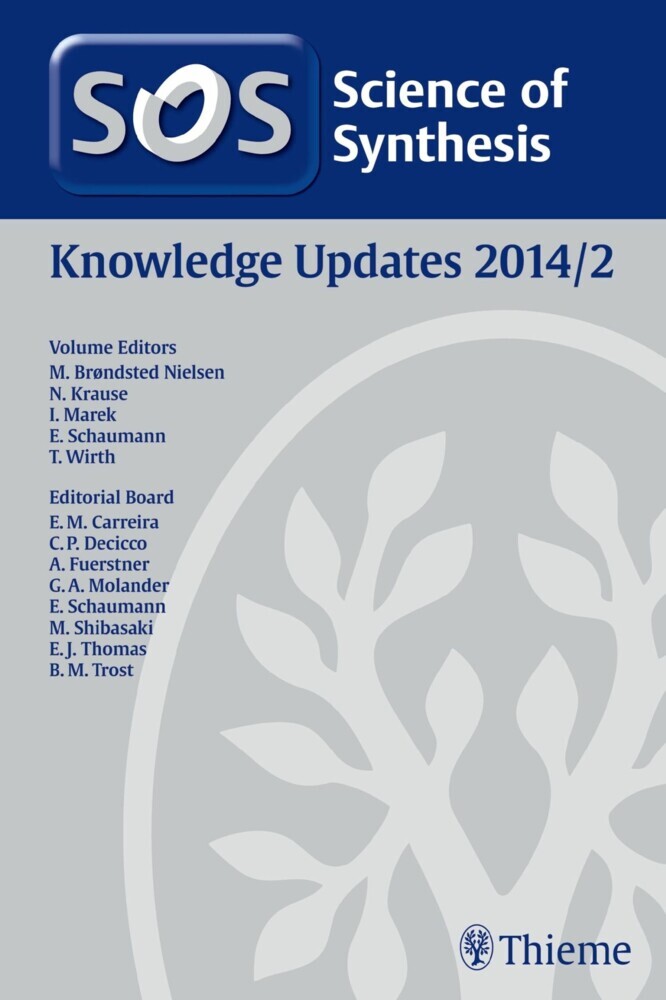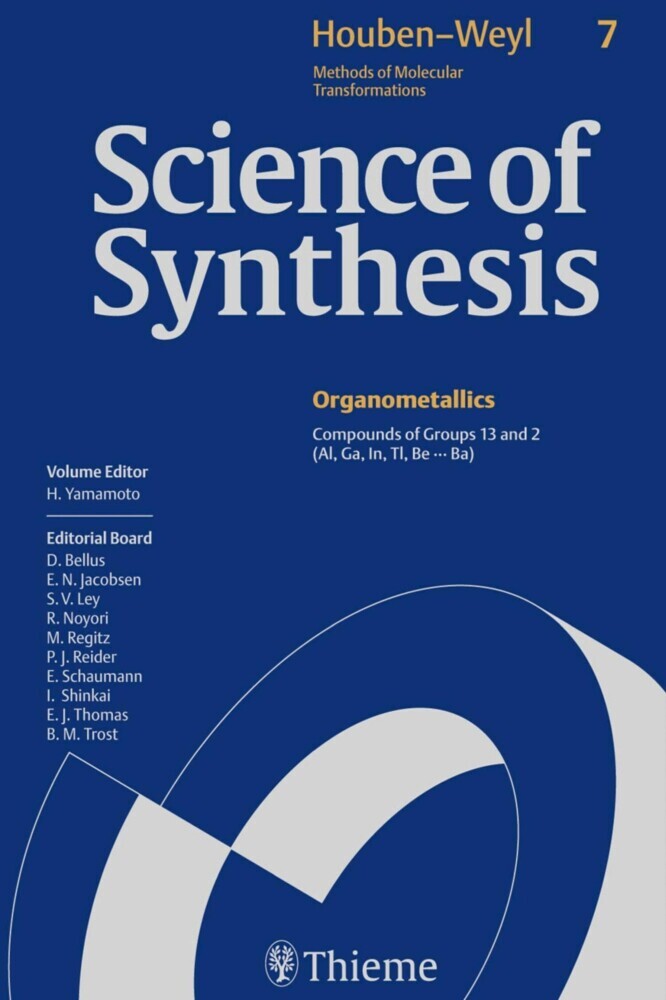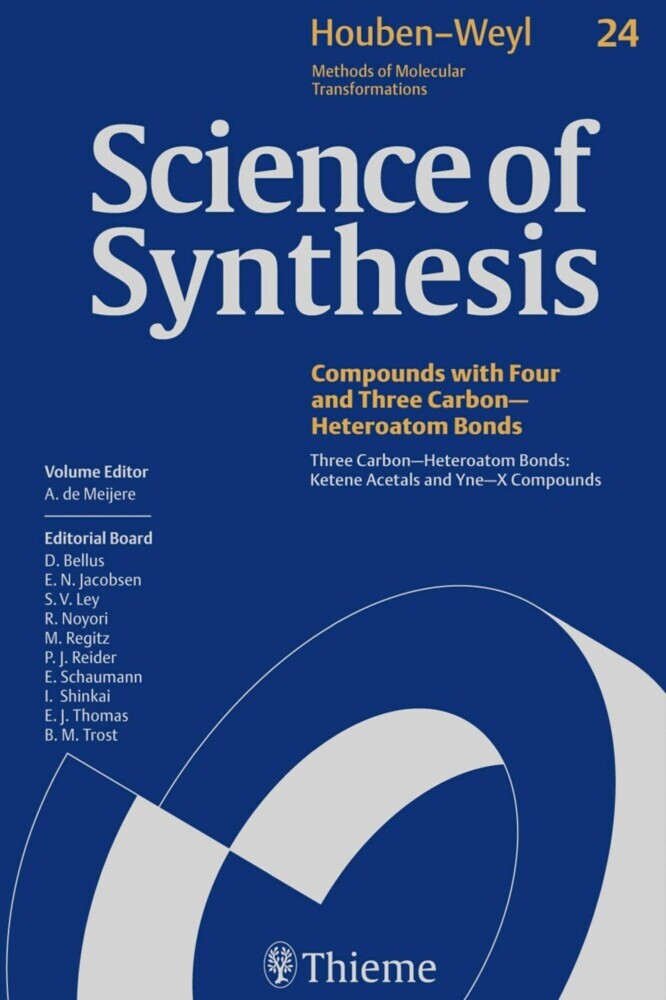Science of Synthesis: Houben-Weyl Methods of Molecular Transformations Vol. 45a
Monocyclic Arenes, Quasiarenes, and Annulenes
Science of Synthesis: Houben-Weyl Methods of Molecular Transformations Vol. 45a
Monocyclic Arenes, Quasiarenes, and Annulenes
Science of Synthesis: Houben-Weyl Methods of Molecular Transformations is the entirely new edition of the acclaimed reference series Houben-Weyl, the standard synthetic chemistry resource since 1909. This new edition is published in English and will comprise 48 volumes published between the years 2000 and 2008.
Science of Synthesis is a quality reference work developed by a highly esteemed editorial board to provide a comprehensive and critical selection of reliable organic and organometallic synthetic methods. This unique resource is designed to be the first point of reference when searching for a synthesis strategy.
- Contains the expertise of presently 400 leading chemists worldwide
- Critically evaluates the preparative applicability and significance of the synthetic methods
- Discusses relevant background information and provides detailed experimental procedures
For full information on the Science of Synthesis series, visit the Science of Synthesis Homepage
1;Science of Synthesis - Volume 45a: Monocyclic Arenes, Quasiarenes, and Annulenes;1 1.1;Title page;3 1.2;Imprint;5 1.3;Preface;6 1.4;Overview;8 1.5;Table of Contents;10 1.6;Introduction;26 1.7;45.1 Product Class 1: Cyclopropenium Salts, Cyclopropenones and Heteroatom Analogues, and Cyclopropenyl Radicals and Anions;36 1.7.1;45.1.1 Product Subclass 1: Cyclopropenium Salts;37 1.7.1.1;45.1.1.1 Synthesis of Product Subclass 1;37 1.7.1.1.1;45.1.1.1.1 Method 1: Synthesis from Cyclopropenes;37 1.7.1.1.1.1;45.1.1.1.1.1 Variation 1: Hydride Abstraction;37 1.7.1.1.1.2;45.1.1.1.1.2 Variation 2: Protonation;38 1.7.1.1.1.3;45.1.1.1.1.3 Variation 3: Halide Abstraction;39 1.7.1.1.2;45.1.1.1.2 Method 2: Synthesis from Halocyclopropanes;42 1.7.1.1.3;45.1.1.1.3 Method 3: Synthesis from Cyclopropenones or Their Heteroatom Analogues;42 1.7.1.1.3.1;45.1.1.1.3.1 Variation 1: O-Alkylation and Related Processes;42 1.7.1.1.3.2;45.1.1.1.3.2 Variation 2: Protonation;43 1.7.1.1.3.3;45.1.1.1.3.3 Variation 3: Formation of Dications;44 1.7.1.1.4;45.1.1.1.4 Method 4: Transformations of Other Cyclopropenium Salts;45 1.7.1.1.4.1;45.1.1.1.4.1 Variation 1: Friedel--Crafts-Type Reactions;45 1.7.1.1.4.2;45.1.1.1.4.2 Variation 2: Substitution;46 1.7.1.2;45.1.1.2 Applications of Product Subclass 1 in Organic Synthesis;49 1.7.1.2.1;45.1.1.2.1 Method 1: Synthesis of Cyclopropenes;49 1.7.1.2.2;45.1.1.2.2 Method 2: Synthesis of Cyclic Compounds;51 1.7.1.2.3;45.1.1.2.3 Method 3: Synthesis of Acyclic Compounds;53 1.7.2;45.1.2 Product Subclass 2: Cyclopropenones and Their Heteroatom Analogues;56 1.7.2.1;45.1.2.1 Synthesis of Product Subclass 2;56 1.7.2.1.1;45.1.2.1.1 Method 1: Synthesis from Cyclopropenium Salts;56 1.7.2.2;45.1.2.2 Applications of Product Subclass 2 in Organic Synthesis;60 1.7.2.2.1;45.1.2.2.1 Method 1: Synthesis of Heterocyclic Systems;60 1.7.2.2.1.1;45.1.2.2.1.1 Variation 1: Nitrogen Heterocycles;60 1.7.2.2.1.2;45.1.2.2.1.2 Variation 2: Oxygen Heterocycles;65 1.7.2.2.2;45.1.2.2.2 Method 2: Synthesis of Carbocycles;67 1.7.3;45.1.3 Product Subclass 3: Cyclopropenyl Radicals;69 1.7.3.1;45.1.3.1 Synthesis of Product Subclass 3;69 1.7.4;45.1.4 Product Subclass 4: Cyclopropenyl Anions;69 1.7.4.1;45.1.4.1 Synthesis of Product Subclass 4;69 1.8;45.2 Product Class 2: Cyclobutadienes, Cyclobutenediones, and Squaric Acids;74 1.8.1;45.2.1 Product Subclass 1: Cyclobutadienes;74 1.8.1.1;45.2.1.1 Synthesis of Product Subclass 1;82 1.8.1.1.1;45.2.1.1.1 Method 1: Synthesis by Cycloreversion;82 1.8.1.1.2;45.2.1.1.2 Method 2: Synthesis by Decomposition of Cyclopropenyl Diazomethanes;85 1.8.1.1.3;45.2.1.1.3 Method 3: Synthesis from Metal--Cyclobutadiene Complexes;87 1.8.1.1.3.1;45.2.1.1.3.1 Variation 1: Using Iron Complexes;87 1.8.1.1.3.2;45.2.1.1.3.2 Variation 2: Using Other Metal Complexes;90 1.8.1.1.4;45.2.1.1.4 Method 4: Other Methods;91 1.8.2;45.2.2 Product Subclass 2: Cyclobutenediones;93 1.8.2.1;45.2.2.1 Synthesis of Product Subclass 2;94 1.8.2.1.1;45.2.2.1.1 Method 1: Synthesis from Alkynes;94 1.8.2.1.1.1;45.2.2.1.1.1 Variation 1: By Cycloaddition Reactions;94 1.8.2.1.1.2;45.2.2.1.1.2 Variation 2: Using Transition-Metal Complexes;96 1.8.2.1.2;45.2.2.1.2 Method 2: Synthesis from Alkenes;98 1.8.2.1.3;45.2.2.1.3 Method 3: Synthesis from Other Cyclobutenediones;100 1.8.2.1.3.1;45.2.2.1.3.1 Variation 1: Friedel--Crafts Reaction of Halocyclobutenediones;100 1.8.2.1.3.2;45.2.2.1.3.2 Variation 2: Reaction of Squaric Acid Derivatives and Carbon Nucleophiles;102 1.8.2.1.3.3;45.2.2.1.3.3 Variation 3: Transition-Metal-Catalyzed Cross-Coupling Reactions;105 1.8.2.1.4;45.2.2.1.4 Method 4: Other Methods;107 1.8.3;45.2.3 Product Subclass 3: Squaric Acids and Derivatives;108 1.8.3.1;45.2.3.1 Synthesis of Product Subclass 3;111 1.8.3.1.1;45.2.3.1.1 Method 1: Synthesis of Squaric Acids from Polyhalocyclobutenes and Related Reactions;111 1.8.3.1.2;45.2.3.1.2 Method 2: Synthesis of Squarate Esters from Squaric Acids;113 1.8.3.1.3;4
| ISBN | 9783131722416 |
|---|---|
| Artikelnummer | 9783131722416 |
| Medientyp | E-Book - PDF |
| Copyrightjahr | 2014 |
| Verlag | Georg Thieme Verlag KG |
| Umfang | 545 Seiten |
| Sprache | Englisch |
| Kopierschutz | Digitales Wasserzeichen |

